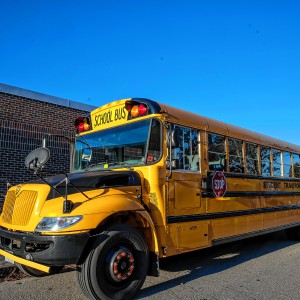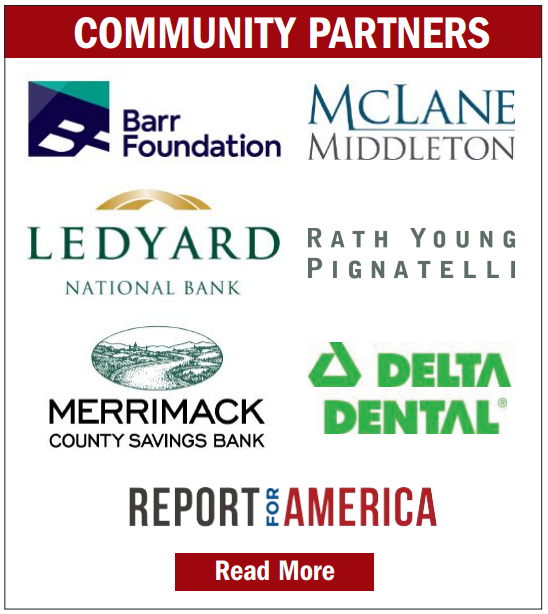Ayotte’s special education funding increase proposal viewed as ‘step in the right direction’

Gov. Kelly Ayotte pictured on Oct. 16, 2024, in Manchester, N.H. (AP Photo/Charles Krupa, File) Charles Krupa
|
Published: 02-14-2025 8:00 AM
Modified: 02-14-2025 11:22 AM |
Leaders of school districts hammered by the rising costs of special education services reacted with muted optimism to the news that Gov. Kelly Ayotte plans to increase a component of state funding for special education by nearly 50%.
“It’s a step in the right direction but it’s definitely not going to solve the overall funding crisis for special education,” said Jessica Bickford, the assistant superintendent of student services for the school administrative unit that includes Pembroke, Allenstown, Epsom, Chichester, and Deerfield.
Ayotte’s proposal – unveiled during a budget presentation to the legislature Thursday – would bring the total amount of money available for reimbursement to schools for the most expensive special education services to $49.4 million per year in 2025 and 2026, up from $33.9 million for the last three years. It would be the largest single-year increase since at least 2017.
In all, school districts spent nearly $1 billion on special education last school year, of which 3.4% was covered by this type of state aid. Were spending to remain constant, Ayotte’s proposal would increase that percentage to 5%.
The special education reimbursement process – formerly called “catastrophic aid” – took center stage last fall when Education Commissioner Frank Edelblut informed school leaders that the state had only about two-thirds of the amount of money school districts were eligible to receive back from their spending in 2023-24.
School board members reacted with anger and Edelblut has since pledged to find more money to fill the gap, NHPR reported last month. A Department of Education spokesperson declined to comment on the status of that process.
Funding for special education services in New Hampshire comes from four sources, two of which are controlled by the state. The first – special education adequacy aid – provides an additional payment for every student who has an individualized learning plan, while the second – the state aid reimbursement – kicks in only after the cost of a student’s services exceeds 3.5 times of the amount of the state’s average per pupil cost, a threshold that reached $75,407.50 in 2023-24.
In 2022-23, the most recent year for which all data is available, state funding that came from those two categories collectively covered 11% of total special education service costs. Local school districts also receive money from the federal government, which amounted to 7% of the total cost that year.
Article continues after...
Yesterday's Most Read Articles
 Schools in Lakes Region explore creating a special education school to bring down costs
Schools in Lakes Region explore creating a special education school to bring down costs
 House committee defunds relief program for mothers and children, spares SNAP incentives
House committee defunds relief program for mothers and children, spares SNAP incentives
 ‘They deserve another chance too’: Palazzo Stables rescues four horses slated for kill farm
‘They deserve another chance too’: Palazzo Stables rescues four horses slated for kill farm
 12 Concord student-athletes sign on to play at the collegiate level
12 Concord student-athletes sign on to play at the collegiate level
 No bet limits and slot machines possible changes to New Hampshire’s casinos
No bet limits and slot machines possible changes to New Hampshire’s casinos
 Trump appoints former New Hampshire environment protection regulator as EPA head
Trump appoints former New Hampshire environment protection regulator as EPA head
The school districts themselves cover the remainder of the costs. In 2022-23, that amounted to $752 million, or 82% of all special education spending.
The state aid reimbursements are designed to offset costs that are particularly volatile and can hamstring districts, particularly small ones. The expenditures that reach the threshold to qualify for reimbursement are almost exclusively for out-of-district placements, the cost of which often rises above $100,00 for an individual student.
“These are the cases that are some of the most challenging cases just for disabled individuals that need acute services,” Ayotte said in an interview following her presentation. “It’s costly, but these are a really important population to serve.”
Last year, districts qualified to receive $50.3 million in reimbursements, but the state had only allocated $33.9 million, a figure that has remained constant for the past three years. As a result, districts received a prorated reimbursement of only 67.5%.
Ayotte’s budget proposal would allocate $49.4 million to reimbursements each year. If the amount submitted for reimbursement exceeds the amount allocated, districts would receive a pro-rated amount, as they have for six of the last eight years, according to Department of Education data.
The amount of special education spending that is eligible for reimbursement has nearly doubled over the last five years, from $29.6 million in 2020 to $50.3 million in 2024.
Megan Tuttle, the president of the teacher’s association NEA-New Hampshire, framed the increase in reimbursement aid as a reaction to statewide support for public education, but she said it remained insufficient.
“While the special education funding increase announced today is a step in the right direction and a sign that the governor has heard the outcry from voters, it is still a drop in the bucket compared to the cost borne by property taxpayers to fund our public schools,” Tuttle said in a statement.
Ayotte’s proposal to increase funding for public schools came in the same breath as she championed Republicans’ “education freedom” agenda, which involves an expanded eligibility for the Education Freedom Account program to all families, regardless of income.
“We are making education freedom available to all public-school students so that parents can decide what learning environment is best for their children and every child has the opportunity to succeed,” Ayotte said.
Opponents of the program have argued that it siphons money away from public education, exacerbating funding challenges.
“I am appalled that the governor is using students who receive special education services as a tactic to divert more public dollars away from public schools to private schools that do not guarantee the rights of the same students she purports to be helping,” Tuttle said.
Charlotte Matherly contributed reporting.
Jeremy Margolis can be contacted at jmargolis@cmonitor.com.







 Henniker ponders what is a ‘need’ and what is a ‘want’
Henniker ponders what is a ‘need’ and what is a ‘want’ Boscawen residents vote to fund major renovation of public works building
Boscawen residents vote to fund major renovation of public works building ‘Voting our wallets’: Loudon residents vote overwhelmingly against $1.7M bond for new fire truck
‘Voting our wallets’: Loudon residents vote overwhelmingly against $1.7M bond for new fire truck In Pembroke, Education Freedom Accounts draw debate, voters pass budget
In Pembroke, Education Freedom Accounts draw debate, voters pass budget
